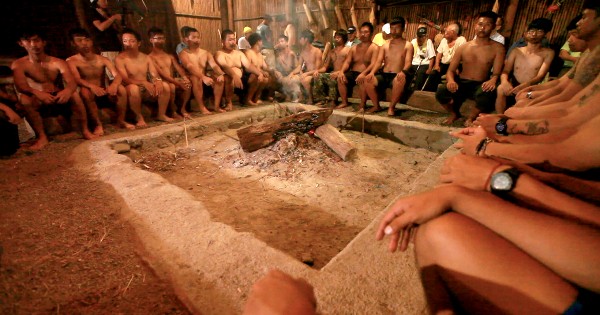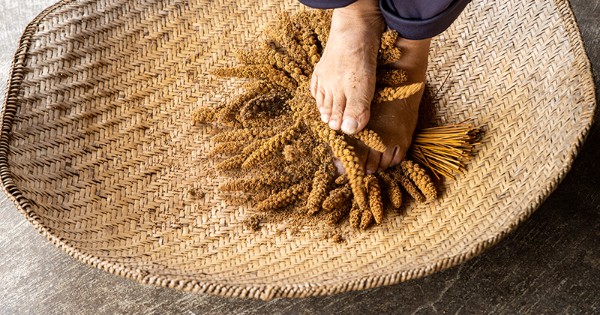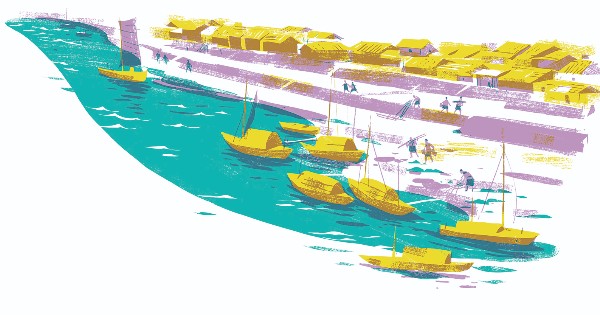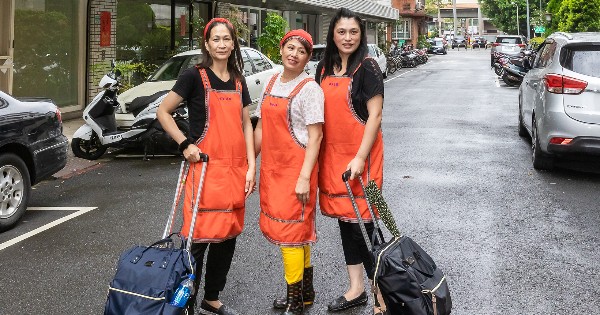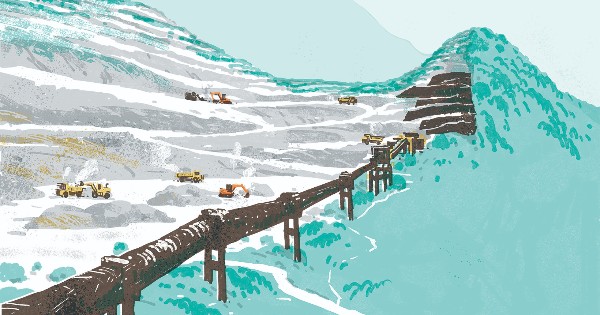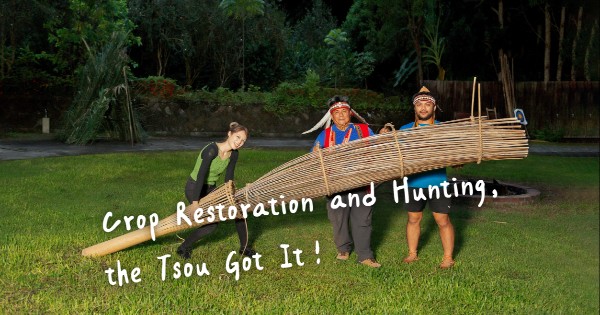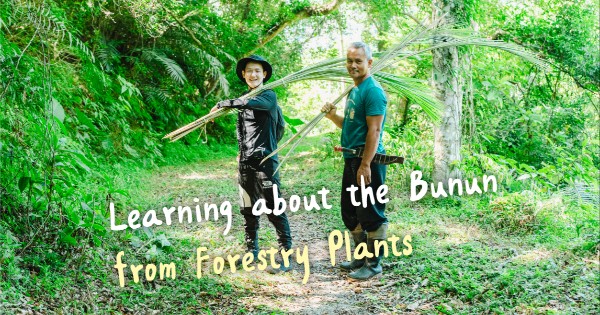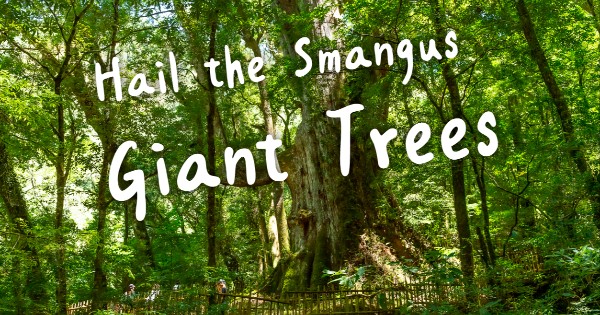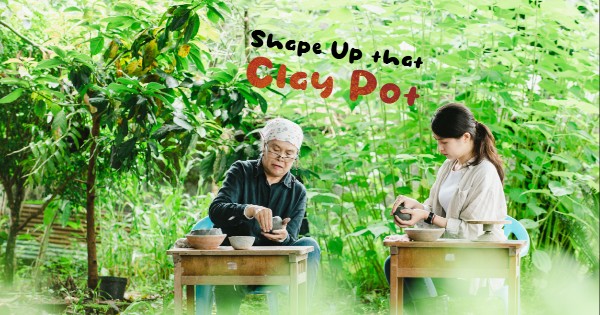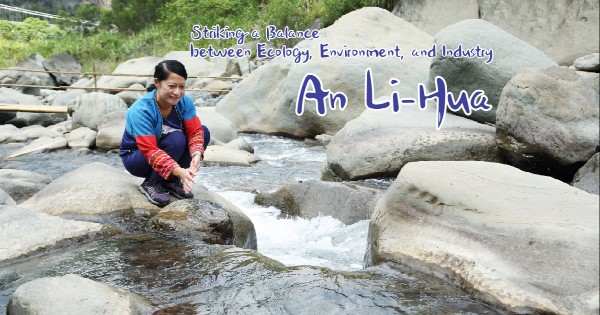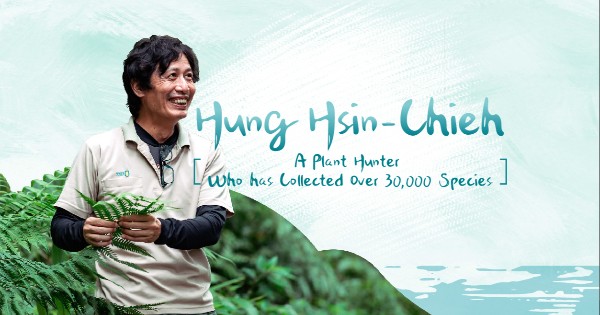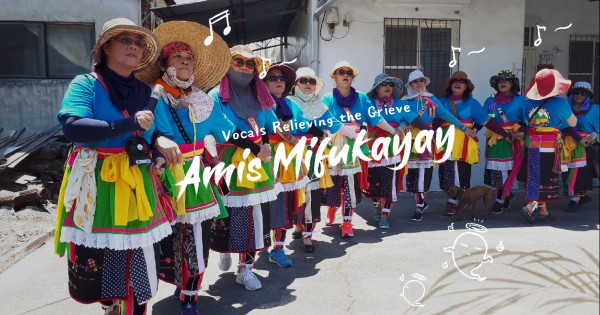2020-06-21
A Katipul Warrior of Palakuwan
Written by Liang Wen-Jing; Translated by 柯乃瑜 Nai-yu Ke; Photo credit: Uki Bauki, Hsu Ming-Cheng
“Defend our ancestors, refuse tomb relocation!” “The land is my mother, not your ATM!” These roars and protests come from the fierce Katipul warriors. Refused relocation of the 6th public cemetery in 2010, Jhihben wetland solar power development in 2018... During every major moment at the village, Katipul Youth Association is always the first stand on the front line, following the ancient precept of “collaboration in solidarity” of palakuwan and devoted to safeguarding their homeland.
2020-04-23
Kaiana Workroom - Working Together to Reintroduce and Create a New Millet Culture
Written by You Tai; Translated by 陳德怡 Deh I Chen; Photo credit: Lin Jing-Yi
“We can only harvest millet once every year. We hang them on the kitchen ceiling where smoke from the cooking stove smokes them daily to keep away bugs and humidity during rainy seasons.” Ciang, a sixty-four years old Bunun man in a traditional vest, shared the life wisdom of his ancestors with visitors. The word “Kaiana” comes from the Bunun language, which means “to hang”. The Workroom adopted this name to symbolize the sight of kitchens with bunches of millet hanging from their ceilings after each year’s harvest.
2019-11-29
To Forget is to Remember Reminiscences about Ketagalan
Written by Jhan Su-Jyuan; Translated by 賴諭萱 Yu Hsuan Lai; Illustrated by Lin Jia-Dong
In March, 1996, based on the suggestions provided by scholars and experts, the then Taipei City Hall renamed Jieshou Road in front of the Presidential Office Building Ketagalan Boulevard in commemoration of the history and culture of Taiwan’s indigenous peoples. It was not until then did the people of Taiwan realise that an indigenous people called Ketagalan existed in Taiwan. After all these years, most people still have no realisation about who they are, what happened in the history, and where they are right now.
2019-10-23
Enjoy Cleaning | Indigenous Women as Professional Cleaners
Written by You Tai; Translated by 柯乃瑜 Nai-yu Ker; Photo credit: Zhi-Shan Foundation / Liu De-Yuan
8:30 in the morning, Lin Shu-Jhen and Chen Li- Ping make their way into a 165.5m2 apartment in Daan district, Taipei City, lay down their toolboxes and began cleaning the house. They start by sweeping the floor, then scraping away the water stains on the glass in the toilet, as well as the oil stains on the cooker hood. Whether it's under the sofa, between the window tracks or inside the light fixtures, however detailed and impossible to clean, they will work meticulously and repeatedly, leaving no stain behind.
2019-09-12
In front of My Home, there is a Mine
Written by kai limadjakan; Translated by 吳宜錚 Sally I.C. Wu; Illustrated by Lin Chia-Dung
According to Bureau of Mine, MOEA, there are in total of 168 mines around Taiwan and most of them are located in Yilan County and Hualien County.
2022-12-07
Crop Restoration and Hunting, the Tsou Got It!
Written by Chiu Mu-Jung; Photo credit: Huang Jiang-Bing
Hunting, agriculture, and fishing are the various sources of food for indigenous peoples. The forestry wisdom and ethics of life of the Tsou are displayed by the tangible tools and intangible culture.
2022-10-06
Learning about the Bunun from Forestry Plants
Written by Chiu Mu-Jung; Photo credit: Lin Jing-Yi
The forest gives life to abundant fauna and flora, which lends to the survival of the Bunun, the Bunun also developed ways to co-exist with the environment, being grateful and respectful of what nature has given them. Dahu took Lowking hiking along the trail to learn about the applications of the plants as well as share the Bunun concept of life.
2022-08-19
Hail the Smangus Giant Trees
Written by Chiu Mu-Jung; Photo credit: Huang Jiang-Bing
Smangus is famous for its giant trees, but how were they discovered? What does the scenery along the way have to do with the migration history and economy of the Atayal people? Walking on the traditional territory of the community, let's take a look at everything that makes Smangus!
2022-06-25
Shape Up that Clay Pot
Written by Chiu Mu-Jung; Photo credit: Lin Jing-Yi
After the shaping practice yesterday, Afo’ lets hewen work on a bigger sized Atomo today, which is a commonly seen everyday life pottery. All that is required as tools are a wheel, a tray, and a wire brush...
2021-12-07
Striking a Balance between Ecology, Environment, and Industry | An Li-Hua
Written by Liang Weng-Jin; Photo credit: Wang Shi-Hao; Translated by Ker Nai-Yu
Tanaiku is the traditional fishing ground of the Saviki Community. The stream is the mother river that feeds and brings closer the relationship within the community. An Li-Hua says, “whether it's limiting access to the river to protect the fish, developing a tourism industry, or rebuilding after the disaster, everything we do is to make sure that our people can stay and live on our own lands.”
2021-10-05
A Plant Hunter Who has Collected Over 30,000 Species | Hung Hsin-Chieh
Written by Chen I-Ru; Photo credit: Huang Jian-Bing, Hung Hsin-Chieh; Translated by Ker Nai-Yu
With part indigenous lineage, Hung Hsin-Chieh, the Plant Hunter, spends his days traveling the forests and mountains alone, just so that every species of flora can be recorded and not lost in time or the environment.
2021-08-03
Vocals Relieving the Grieve | Amis Mifukayay
Written by Liang Weng-Jin; Photo credit: A Lan Lan; Translated by Ker Nai-Yu
Mifukayay, funeral singing, is a tradition of the Amis funeral culture, half praying and half chanting, the singer details the deeds of the deceased and connection to the indigenous community and family. The singing describes the loss of a loved one, comforts the grieving family, and encourages people to look towards the future.
